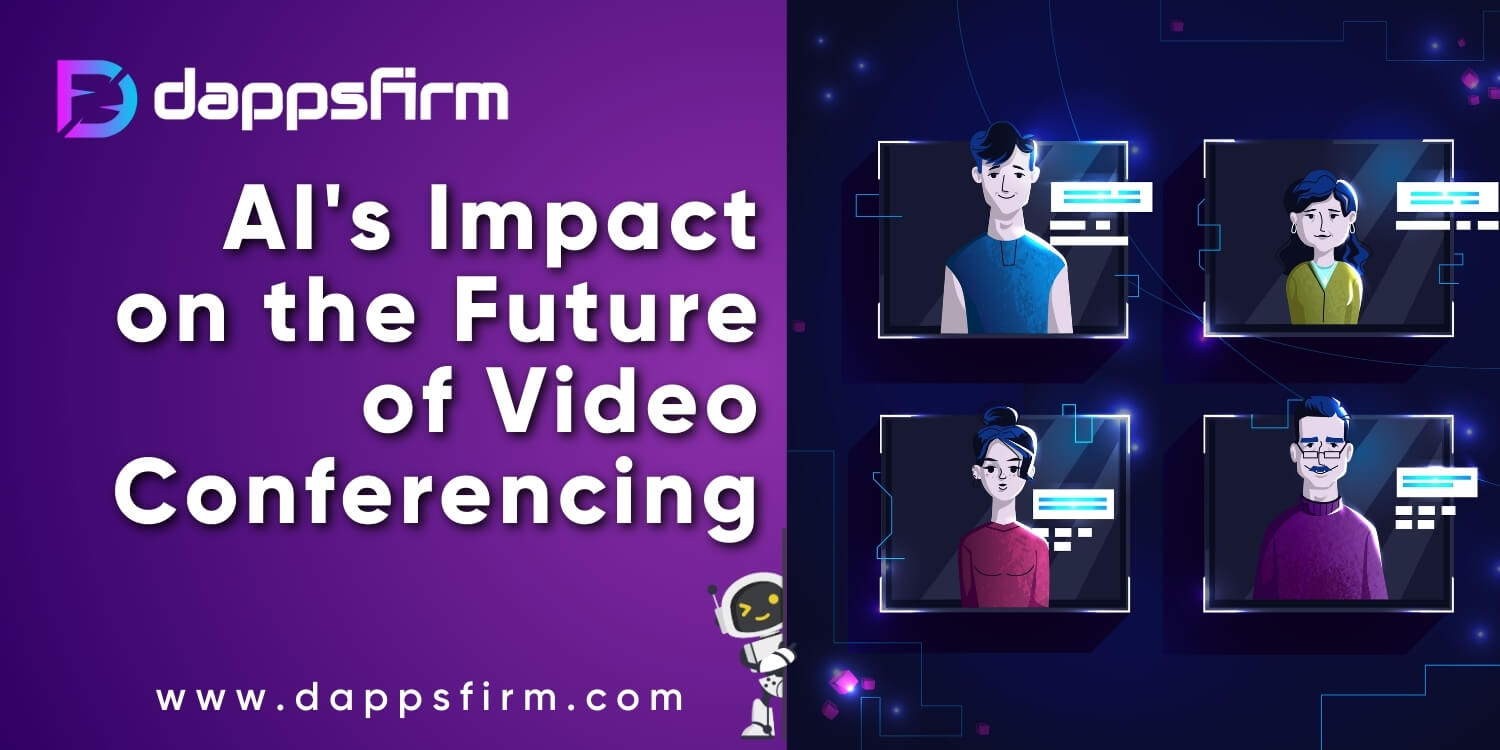Revolutionize Video Conferencing with AI-Enabled Solutions
Elevate your video meetings with AI technology - automate scheduling, transcribe discussions, and enhance productivity effortlessly. Join the future of collaboration!

Artificial Intelligence (AI) is the next evolution in video conferencing. Consider using a video meeting solution that automates team scheduling or accurately transcribes meetings. All of this is possible with a few simple AI apps.
Let’s take a look at the function of AI-enabled video conferencing, as well as some of the key benefits it provides to your company and teams.
What is AI-enabled video conferencing?
AI-enabled indicates that a technological solution incorporates artificial intelligence. Machine learning is utilized in AI-enabled video conferencing to optimize meeting experiences for participants, such as noise reduction and improved presentation delivery. It is also used to record and store meeting information for subsequent viewing or distribution with non-attendees.
Teams can enhance the productivity and efficiency of virtual meetings by employing AI capabilities. They can also do more with recorded meeting sessions after the fact, using analytics to enhance meeting efficiency over time.
AI-enabled video conferencing development
AI video conferencing development is the process of integrating Artificial Intelligence technology into video conferencing systems to improve features like facial recognition, backdrop blur, noise cancellation, real-time language translation, and other intelligent capabilities. This integration uses powerful algorithms and machine learning approaches to improve the overall user experience, expedite communication and optimize video meetings.
AI advance benefits video conferencing
AI in video conferencing is delivering various advances to conference room experiences such as the following:
- Video enhancement such as active participant framing, virtual backdrops, alternate layouts, and resolution upscaling increase image quality.
- Presentation upgrades allow speakers to appear in front of their information.
- Active noise cancellation and acoustic barriers reduce noise from dogs, automobiles, paper, shuffling and even food bags.
- Closed captioning with real-time translation allows participants to follow conversations that are not in their native tongue. Soon, AI will offer audio translation, allowing participants to hear talks in their native languages.
- Facial recognition allows meeting participants to see the names of other attendees and learn more about them while they are there. Facial recognition also allows the meeting system to recognize individuals as they enter a room, resulting in speedier meeting start times.
- Automated note-taking transcribes discussions and saves action items for future review. Transcription engines can now distinguish individual participants in a conference room owing to advances in AI.
- Person counting enables facilities managers to identify room usage trends, allowing for efficient meeting space provisioning and the release of rooms that are planned for a meeting but are not occupied once the conference begins.
- Chatbots provide engagement with conferencing systems for scheduling or features management.
- Personal voice assistants allow participants to initiate meetings by speaking to endpoints and applications, record crucial things and control the meeting experience.
- Proximity detection allows meetings to be scheduled in the conference room closest to the person seeking them.
How Does AI Help With Video?
AI-powered call summaries, captions and translations and audio upgrades are helpful for the following typical use cases:
Live streaming: Businesses are increasingly turning to live video streaming. They can also improve their feeds with background blurring, noise removal, transcriptions and automatic summaries.
Virtual events: Virtual events give organizations with game-changing immediacy, case and real-time interaction, especially as they seek to grow their digital platforms. Companies can utilize AI to create backdrop blurs, noise reduction, transcriptions and automated summaries, much like they do for live events.
Virtual and remote services: Think about how you own life. Instead of commuting across town or adjusting your schedule, you may make a virtual visit to the doctor. And, due to AI, you'll get an automatically created appointment summary with next steps.
Remote cooperation :Remote collaboration demands concentration and follow-up, whether working one-on-one or with a big group. AI assists with background blurring and noise removal... Not to mention automatically generated meeting summaries with complete transcriptions.
Agent assist: AI and machine learning can anticipate consumer calls and provide timely replies to support service personnel. AI can also do real-time sentiment analysis and escalate a call if needed. When real agents join video conversations, they may use AI-generated insights to swiftly fix consumer issues.
What about the future?
All of the items listed above are available for immediate use. However, as the domains of AI and unified communications evolve, additional improvements will occur.
We should expect to see increasing connections to augmented reality (AR), which enables real-time, interactive visuals. Instead of depending on a static graph screenshare, consider using a 3D data representation that participants may customize to their own requirements.
AR can expand the capabilities of video conversations. Instead of showing them a product in person, you might be able to offer a 3D depiction of it. You might utilize augmented reality to detect technical difficulties without having to bring an IT consultant into the workplace. This will make video conferencing much more accessible and ubiquitous.
AI will continue to enhance video conferencing in the future years. It's important to take the time to become acquainted with it now, so that you can capitalize on these exciting new advancements when they arise.
At dappsfirm, we deliver AI-enabled videoconferencing.
Nowadays, people spend a lot of time in meetings. Dappsfirm is the top AI software development platform . As a result, firms must guarantee that time is spent productively on value-added activities and essential business operations. Fortunately, AI-powered tools assist firms in capturing and using meeting data.AI improves data collecting and gives consumers the ability to analyze critical indicators.Dappsfirm recognizes that artificial intelligence represents the next phase of video conferencing. That's why AI is integrated into several of our most recent innovations